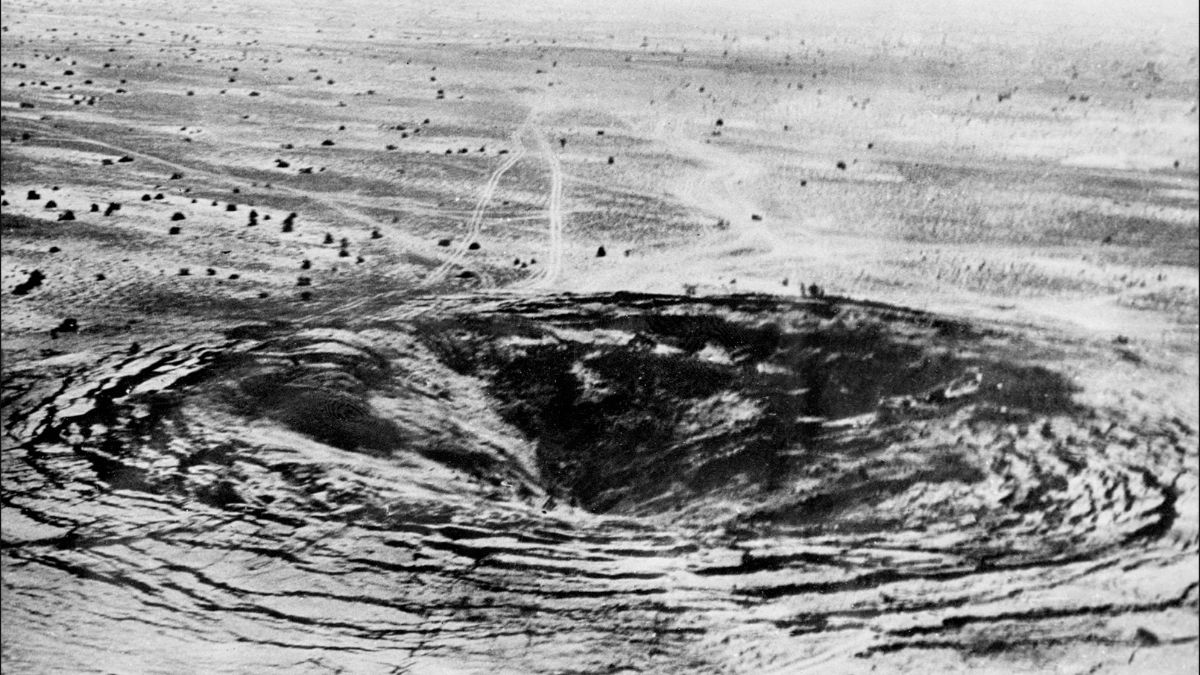May 18 marks a defining moment in India’s journey to becoming a global power.
In 1974, India surprised the world by entering the nuclear age with its first atomic test at Pokhran, dubbed “Smiling Buddha.” Despite international criticism and suspension of nuclear cooperation, India remained resolute and continued to build its nuclear capabilities.
Just six years later, in 1980, the United States faced one of the deadliest natural disasters in its modern history—the catastrophic eruption of Mount St. Helens. As many as 57 people lost their lives in the incident.
Here’s a closer look at the moments that made history on May 18 in Firstpost Explainers’ ongoing series, History Today .
India conducts its first nuclear test
On May 18, 1974, India made history by conducting its first nuclear test in the Pokhran desert of Rajasthan. Code-named Smiling Buddha, the test marked India’s formal entry into the league of nuclear-capable nations, becoming the first country outside the five permanent members of the UN Security Council to do so.
The journey to this test began decades earlier. In 1954, India set up the Department of Atomic Energy under the leadership of Dr Homi J Bhabha. The programme was initially focused on peaceful uses of nuclear energy, but the geopolitical situation took a shift. China’s nuclear test in 1964 heightened security concerns in India.
Further, the 1968 Nuclear Non-Proliferation Treaty (NPT) came into being. The treaty allowed the five declared nuclear states—US, UK, Russia, France, and China—to retain their weapons, while restricting others from developing the same capabilities. India termed the move as discriminatory and believed this denied it the right to strategic autonomy and technological progress.
“Scientists like Homi Bhabha, who played a critical role in nuclear testing, advocated retaining at least the option of developing Peaceful Nuclear Explosives (PNEs) for civilian purposes like mining and earth-moving projects,” according to the Observer Research Foundation (ORF).
Then, PM Indira Gandhi took a strong stance against the discriminatory NPT and authorised the efforts of the Indian nuclear establishment “to achieve a functional nuclear explosive capability over the next several years, in pursuit of the peaceful option if needed,” states ORF.
Over the next several years, Indian scientists worked in secret to prepare for a test. Finally, on Buddha Purnima in 1974, an underground detonation was successfully carried out in Pokhran. The yield was estimated to be between 10 and 15 kilotons.
While the government described it as a peaceful nuclear explosion, the test sent shockwaves across the world. It invited condemnation from Canada, which had supplied the reactor used for the test, and the United States, which suspended nuclear cooperation. Pakistan too expressed alarm, accelerating its own nuclear ambitions. Some critics also suggested it was a political move by the Gandhi government to deflect attention from the economic crisis.
Yet, despite the backlash, Smiling Buddha marked India’s arrival as a nuclear-capable state—and rewrote the rules of global power.
The eruption of Mount St Helens
On the same day in 1980, Mount St Helens in Washington State, US, erupted violently in the deadliest and most economically damaging volcanic event in the nation’s history.
Triggered by a 5.1 magnitude earthquake, the north face of the volcano collapsed, causing the largest landslide ever recorded. This released a lateral blast of hot gas and rock that swallowed everything in its path, flattening over 230 square miles (595 sq km) of forest.
The massive eruption column rose 15 miles into the sky, and ash was carried eastward by the prevailing winds, reaching as far east as the central United States and even Canada.
Fifty-seven people were killed, including volcanologist David Johnston and photographer Reid Blackburn. The financial cost exceeded $1 billion, with entire communities, ecosystems, and transport networks disrupted.
“There were indirect and intangible costs of the eruption as well,” the USGS website states. “Unemployment in the immediate region of Mount St Helens rose tenfold in the weeks immediately following the eruption and then nearly returned to normal once timber salvaging and ash cleanup operations were underway.”
The disaster marked a turning point in how the US approached volcanic hazards. It led to improvements in monitoring and disaster preparedness, with Mount St Helens now serving as one of the most studied volcanoes in the world.
With input from agencies
)